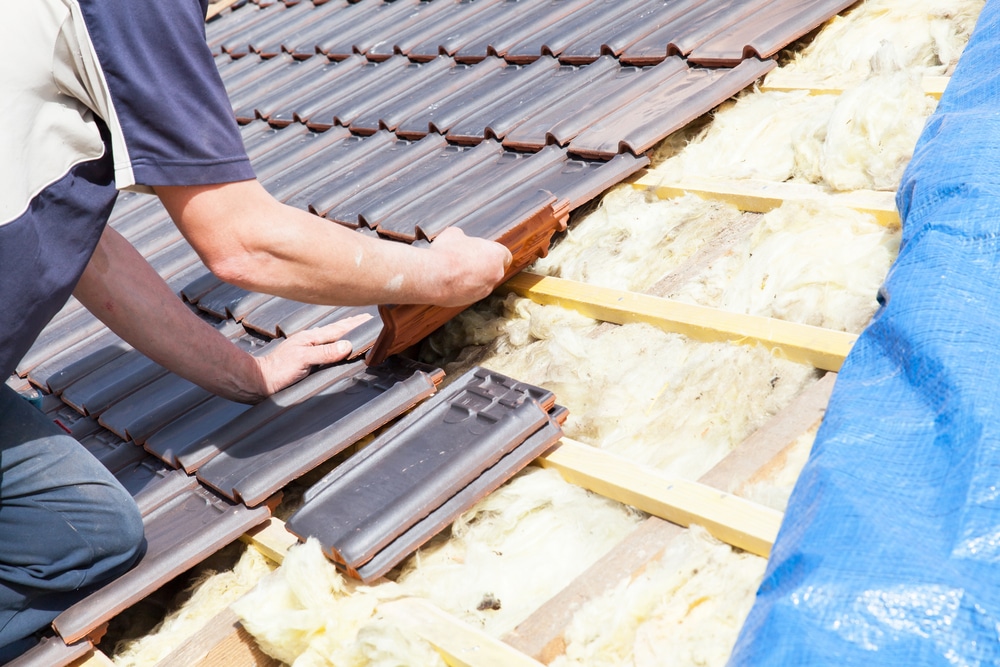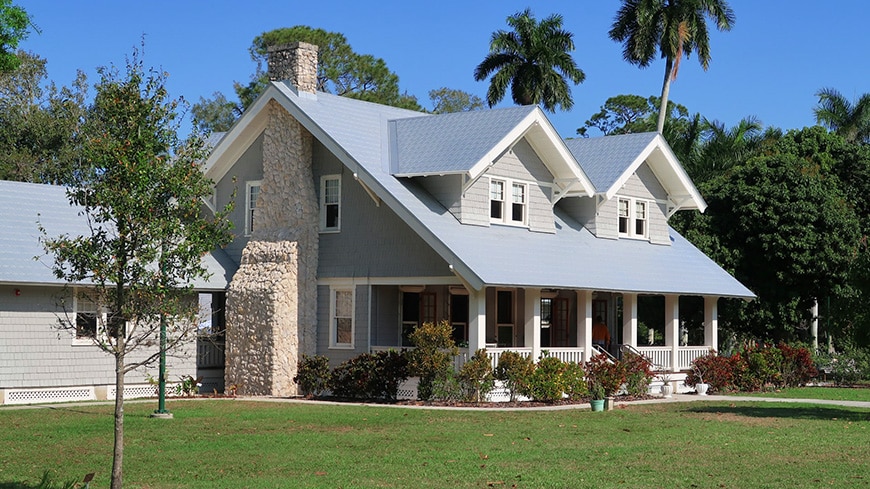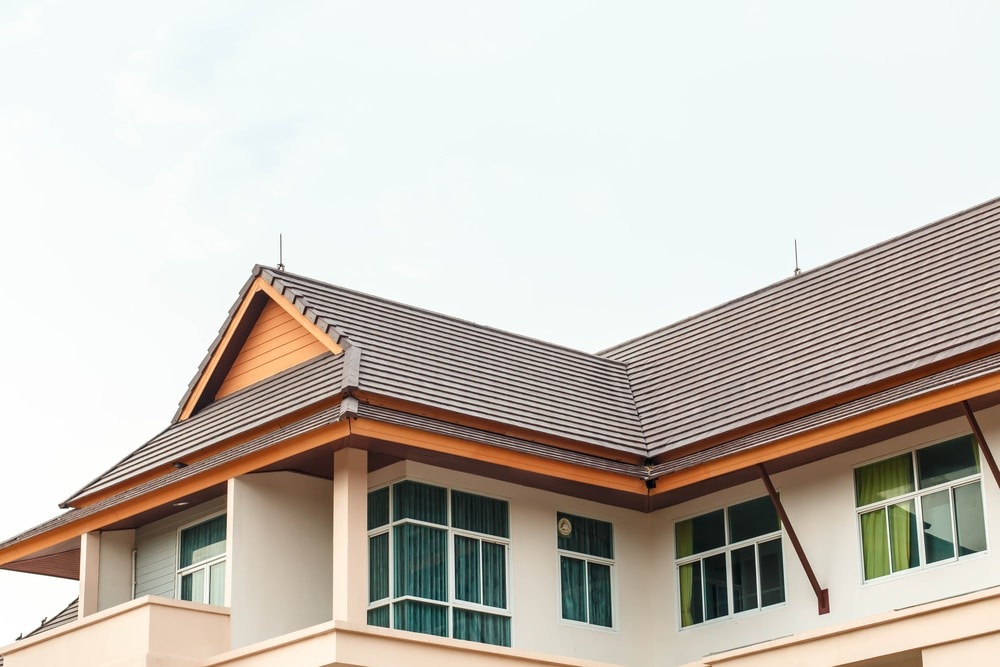Mesa roofs are one of the most important features of any building. They provide protection from outside elements, while also keeping a safe and comfortable internal environment. Proper insulation is essential for Mesa roofs in order to maintain their integrity, durability, and performance throughout their lifetime. This article will discuss the importance of proper insulation for Mesa roofs and how it impacts the overall quality and longevity of these structures.
Insulation can be defined as material that reduces heat flow or sound transmission through walls, ceilings, floors, windows and other sources. In relation to Mesa roofs, insulation helps reduce energy costs by preventing air leakage between living spaces and outdoors. Not only does this help keep interior temperatures more consistent year-round but it also increases the efficiency of heating systems during colder months; leading to lower utility bills over time. Additionally, proper insulation improves indoor air quality by reducing airborne pollutants from entering into living spaces which can have negative health effects on occupants inside buildings.
Benefits Of Proper Insulation For Mesa Roofs
When discussing the importance of proper insulation for mesa roofs, it is essential to consider the benefits that this provides. Firstly, home and business owners alike will experience lower energy costs when they install high-quality insulation in their roofing systems. This is because less heat escapes through the ceiling, thus reducing the amount of energy needed to keep a space at a comfortable temperature. Additionally, properly insulated roofs prolong the lifespan of shingles as well as other components of a roof system, since extreme temperatures are not allowed to penetrate into these spaces.
Another benefit associated with installing proper insulation on mesa roofs relates to soundproofing capabilities. In areas where noise pollution is an issue, having adequate insulation can help reduce incoming noise levels significantly.
Overall, properly insulating mesa roofs offers numerous advantages related to cost savings and comfort level improvement. It also plays a key role in helping protect against outside noises while keeping indoor temperatures more consistent year-round.
Types Of Insulation Available For Mesa Roofs
When it comes to mesa roofs, proper insulation is essential for providing protection from the elements and maintaining a comfortable temperature inside. There are various types of insulation that can be used when insulating mesa roofs. This article will discuss two popular types: batt insulation and spray foam.
Batt insulation is one of the most common forms of insulation for mesa roofs due to its affordability and ease of installation. It consists of flexible fibers that are usually made from recycled materials such as denim or paper products, which makes it an eco-friendly option. Batt insulation is typically installed between rafters in order to prevent air leakage into the home through gaps around windows, doors, and other openings. Its ability to trap heat also helps reduce energy costs during cold winter months.
Spray foam insulation is another type that can be used on mesa roofs, though it may require professional installation due to its complexity. Spray foam is a combination of liquid chemicals that expand into a solid form upon application; this creates a tight seal within cavities or crevices where traditional batt insulation cannot reach. The advantages offered by spray foam include improved soundproofing capability as well as greater resistance against mold growth due to its moisture-resistant properties. Additionally, spray foam provides superior thermal efficiency compared to batts since there are no voids or gaps in coverage after installation.
In terms of cost-effectiveness and overall performance, both batt insulation and spray foam offer distinct benefits when applied to mesa roof projects. Depending on the specific needs of each project – including budget constraints, desired R-value (thermal resistance), and noise reduction goals – either type could serve as an effective solution for properly insulating these structures.
Factors To Consider When Choosing Insulation For Mesa Roofs
When choosing insulation for Mesa roofs, there are a number of factors to consider. These include the climate in which it will be installed, the type and thickness of the insulation material, energy efficiency ratings, and environmental impact.
Climate is an important factor when selecting insulation for a Mesa roof. In areas with colder climates or seasonal temperature variations, thicker insulation materials may be needed in order to maintain interior temperatures during extreme weather conditions. When installing in warmer climates, lighter materials can be used as they do not need to withstand such drastic changes in temperature.
The type and thickness of the insulation should also be taken into account when making this decision. Different types of insulation have different levels of thermal resistance; therefore one must choose an appropriate product based on their needs and budget. The thicker (or higher R-value) the material used, the better its insulating properties will be.
Energy efficiency ratings are another key element to bear in mind before purchasing any particular product for installation on a Mesa roof. Energy Star rated products provide consumers with information about how much energy is required to operate certain items versus others that offer similar features but at a lower cost per unit energy consumption rate over time. Environmental impact is also something that should be researched prior to purchase so that people can make informed decisions about what kind of material best suits their needs while minimizing ecological damage from production processes and disposal methods.
In addition to these considerations, other things like fire safety standards and noise reduction capabilities should also be kept in mind when selecting suitable insulation for Mesa roofs. A thorough research process should take place before deciding on a specific product or supplier in order to ensure maximum effectiveness and long term value for money spent on this project.
Cost Of Installing Insulation On Mesa Roofs
When deciding on an insulation material for mesa roofs, cost is a major factor to consider. In addition to the initial price of the materials, there are other expenses that need to be taken into account when determining the total cost of installation. These costs include: labor, tools and fasteners needed for proper installation, as well as any additional features like air sealing or extra ventilation.
The overall cost of installing insulation will vary depending on the type of insulation chosen and its R-value. Generally speaking, higher quality insulations require more money up front but they tend to have better thermal performance over time which leads to energy savings in the long run.
It’s essential to weigh all aspects of cost prior to making a decision regarding insulation installation. Not only should one compare prices between various companies offering similar products, but also take into consideration factors such as energy efficiency and durability when calculating value for money spent.
Appropriate R-Values For Mesa Roof Insulation
Considering the specific conditions of mesa roofs, appropriate R-values must be taken into account when installing insulation. R-values are measures used to determine the thermal resistance or effectiveness of insulation materials in regards to temperature control and energy efficiency. The higher the R-value, the better the material’s ability to keep heat inside during winter months and out during summer months.
For mesa roofs specifically, an adequate R-value should range from 40 – 60 depending on local climate conditions, while a minimum value of 30 is suggested for most climates. Furthermore, it is important to use high quality insulating material which has been designed and tested for these types of roof systems in order to ensure optimum performance and maximum protection against extreme temperatures. Additionally, proper installation techniques and methods should also be employed when considering attic ventilation as this can also play an important role in maintaining optimal indoor temperatures throughout all seasons.
Professional Installation Of Insulation On Mesa Roofs
The topic of professional installation of insulation on mesa roofs is an important one. Proper installation is key to ensuring that the desired R-value, or level of thermal resistance, is achieved in order to guarantee adequate energy efficiency and comfort.
Installation should be done by trained professionals who have experience working with this type of material in order to maximize its effectiveness. Professionals will know how to properly measure and cut materials as well as use specialized tools such as blow-in insulating machines. Furthermore, they can help identify potential problem areas which may affect the performance of the installed insulation system over time. Therefore, engaging qualified personnel is highly recommended when it comes to installing insulation on mesa roofs so as to achieve optimal results.
Maintenance Of Mesa Roof Insulation
Maintaining insulation on mesa roofs is an essential part of the overall efficiency and effectiveness of this type of roof. Professional installation ensures that all components are correctly in place for maximum performance, but regular maintenance will help to keep it functioning optimally over a longer period of time. Maintenance should include removing any debris from between layers as well as checking for signs of wear or damage.
It is also important to make sure that insulation levels remain consistent throughout by adding more if necessary. If moisture has been allowed to accumulate, measures must be taken to reduce the amount inside the insulation material so that it does not become damaged. Additionally, inspecting for gaps or tears can prevent air leakage which can reduce the energy-efficiency of the roof system. Taking these steps will ensure proper insulation remains effective and provides long-term protection against extreme weather conditions.





